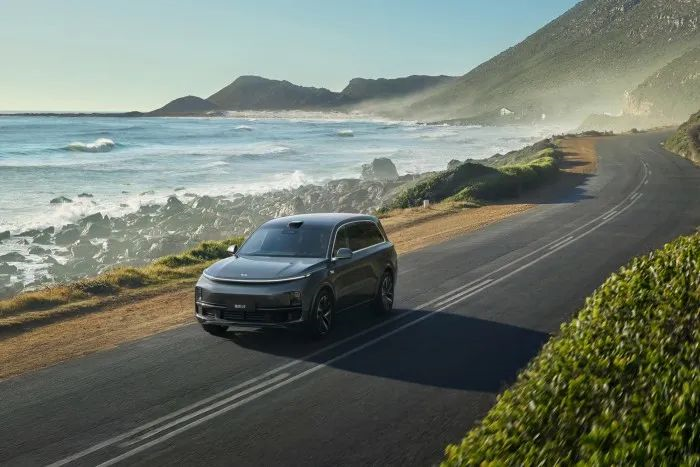## Does the Ideal L9 have millimeter wave radar?
Hello, everyone who pays attention to Ideal L9. It's time for the weekly reserved program again.
Before we get into the topic, let's just say that Ideal Automotive really squeezed the flow password tightly in their hands and fully utilized the leak-proof method to create high heat for the Ideal L9. We can boldly predict that after a few waves of leaks, Ideal L9 is unlikely to hold large product launches anymore and will directly start pre-sales at the Beijing Auto Show, achieving cost-saving and earning, and I would like to call it the most successful case of dissemination in the automotive industry in 2022 (doge).
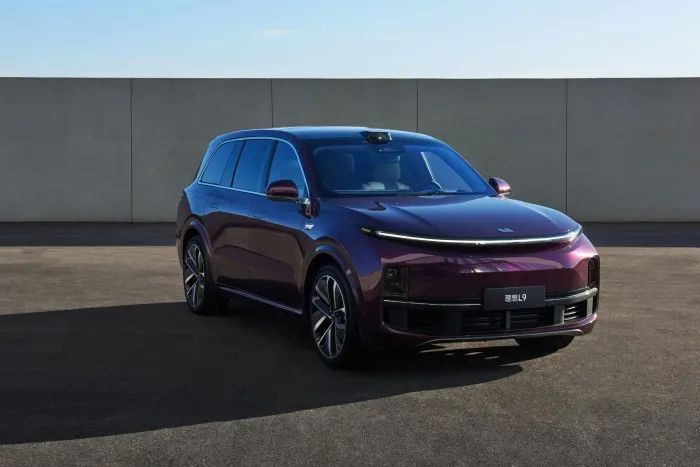
The two pieces of information finally brought out by this leak are as follows:
- A self-developed flagship intelligent driving system: Ideal AD Max
- Flagship-level body safety protection
## Ambitious car companies are all self-developing
With the rise of new domestic car manufacturing, there is also the concept of "full-stack self-development." Among the three head new car companies we are familiar with, with the small-peng automobile identifying itself as a technology company, it was the first to start full-stack self-developed autonomous driving systems. Ideal and NIO followed closely behind.
Of course, there are even purer players in smart car industry, such as Leapmotor. The founder of Leapmotor, Zhu Jiangming, was formerly the chairman of a security and monitoring company, Dahua Technology, and brought his experience in self-developed camera equipment from Dahua Technology to Leapmotor. Leapmotor not only self-developed vehicle-class HD cameras, but also self-developed automatic driving chips.
According to Ideal Automotive's public information, the first time Ideal mentioned self-developed auxiliary driving system was at the signing ceremony with NVIDIA on September 22, 2020. At that time, Ideal announced that it would adopt the NVIDIA ORIN chip as the intelligent driving system chip for its full-size SUV to be mass-produced in 2022, which is the chip solution with a total computing power of 508 TOPS carried by L9 today. The intelligent driving domain controller will be provided by Desay SV, and Ideal will achieve full-stack self-development of the intelligent driving system on L9.
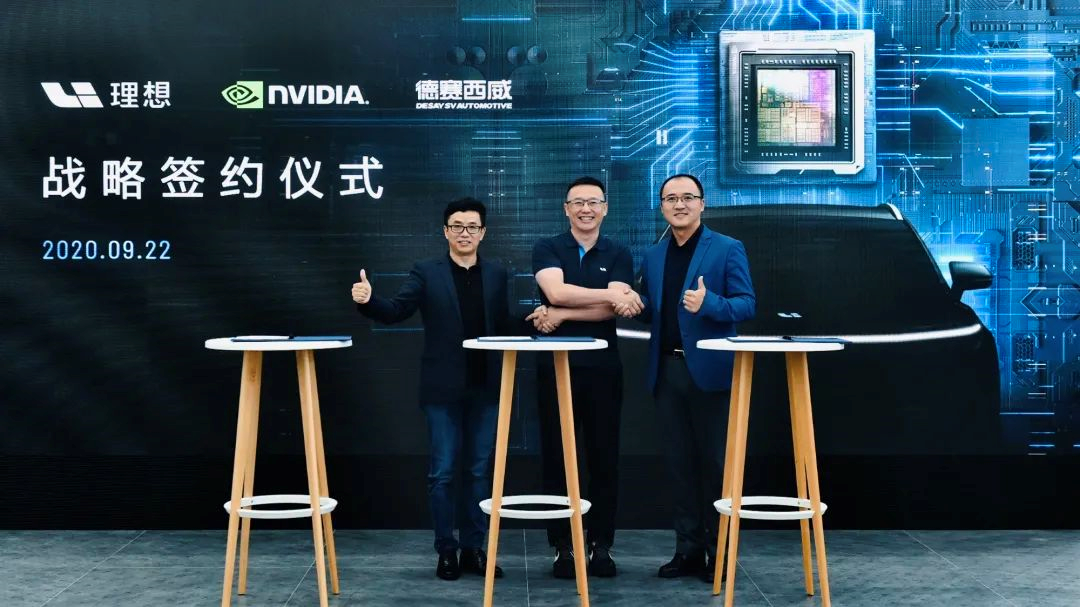
Ideal AD Max is developed with a full-stack self-developed perception, decision-making, planning, and control software to ensure system reliability and high scalability.
We will find a phenomenon that all the head players of intelligent vehicles have already implemented or are developing their own autonomous driving system algorithms, while many global vehicle companies are not eager to start self-developed algorithms, but rely on packaged algorithms provided by suppliers. What are the benefits of self-development? The most critical point is to cope with function iteration calmly.
Obviously, the role played by contemporary automakers is no longer that of a simple car manufacturer. They are more willing to think from the standpoint of users and provide a better set of travel solutions. This change is also the reason why the term “user co-creation” has risen in recent years.
The Ideal AD intelligent driving system used on the Ideal ONE is jointly developed by Ideal and semiconductor supplier Horizon. Two years after the official delivery of the Ideal ONE, the all-new Ideal AD MAX intelligent driving system has more Chinese road characteristics. Among them, the AEB automatic emergency braking function has been optimized for Chinese road conditions, enhancing the recognition of crossing pedestrians and bicycles, and reducing the incidence of traffic accidents. This can be achieved by full-stack self-research capabilities, allowing for rapid iteration of functions.
In addition, the Ideal L9 uses a capacitive steering wheel, which can better identify whether the user is holding the steering wheel in the assisted driving scenario without deliberately shaking the steering wheel for recognition, improving the user experience in the assisted driving scenario.

Obviously, “user experience” has become the most important point of car companies in the intelligent vehicle era, and all car companies that have entered the self-development track understand that they are closely connected with users. Even if solving user feedback is the key to building a brand “moat”.
Is there a millimeter wave radar or not?
In terms of perception hardware of the intelligent driving system, the Ideal L9 uses:
- A semi-solid-state laser radar with 128 threads
- 6 8-million-pixel cameras
- 5 2-million-pixel cameras
- Millimeter wave radar: unknown
The fact is that this preview of the Ideal L9 does not indicate whether or not the vehicle is equipped with a millimeter wave radar. Since Ideal did not say so, does that mean there is no millimeter wave radar? But I always feel that things are not that simple.
Before the laser radar entered the market, millimeter wave radar and high-definition cameras were a golden combination, with the millimeter wave radar detecting the distance to the target object and the vision imaging the target. In an era when cameras were not involved in perception, vehicle millimeter wave radar could only perceive that there was an object in front, but not what the object was. Nowadays, vehicles can obtain more information, which is why we can see clearly defined bicycles, motorcycles, cars, trucks, ice cream cones, and trash cans in the ADAS visualization interface of the vehicle’s infotainment system.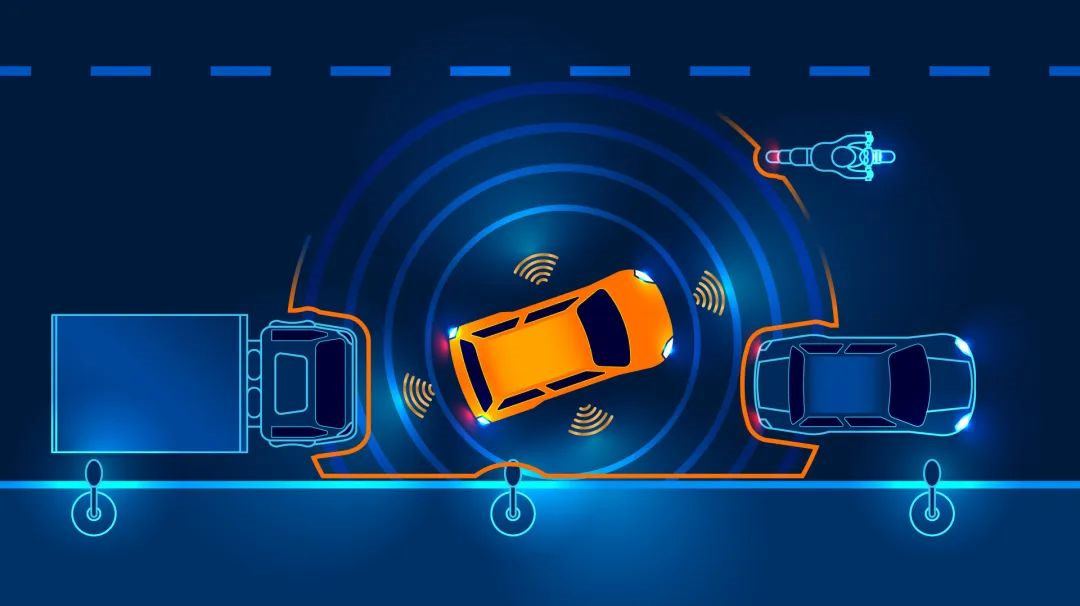
Certainly, the potential of combining cameras with AI algorithms is very strong. In theory, autonomous driving of vehicles could be achieved through pure visual algorithms alone. This calls into question the perspective of those who dismiss lidar as completely worthless, like Ma Yilong. The ideal L9 lidar can only cover a 120-degree angle in front. Without the assistance of millimeter-wave radar, the camera is the only tool available to judge the distance between objects in the remaining 240 degrees of the vehicle’s area.
In fact, within the industry, both visual algorithms and fusion algorithms have their own advantages and disadvantages. The benefit of a single visual algorithm is that the decision layer only needs to receive information from the camera. However, visual algorithms are not entirely rational. For example, the “ghost braking” phenomenon is caused by visual algorithms mistaking shadows for objects. Although fusion algorithms use millimeter-wave radar for accurate ranging, it can result in inconsistency between the measured data of the camera and the millimeter-wave radar. When two different types of data are given to the decision layer, it is difficult to make a judgment.
Returning to the question of whether the ideal L9 will be equipped with millimeter-wave radar, the first thing to consider is whether the ideal L9 has the ability to utilize visual algorithms. As mentioned above, the ideal began full-stack self-developing intelligent driving systems only in September 2020. It has only been a year and a half since then.
Friends who closely follow Tesla’s movements must know that pure visual algorithms are a solution that tests AI capabilities. Tesla not only has over 2 million vehicles running data for them globally, but also employs lidar testing data to train its visual algorithm. At last year’s Tesla AI day, Tesla unveiled the Dojo supercomputer, which is deployed in the cloud and possesses high-intensity computing capabilities. This suggests that Tesla’s pure visual algorithm products are being prepared for full automation, and proves that landing visual algorithms is not a one-time event.
Another point is that, when the ideal ONE was refreshed in May 2021, it was only equipped with an 8 million pixel high-definition camera. It has been less than a year. The earliest solution for the ideal ONE was to use a 2-million-pixel camera to assist millimeter-wave radar. If the upcoming production model of the ideal L9 adopts visual algorithms, it will be a very significant technological breakthrough for the company. Therefore, it is logical to say that it is unlikely that the ideal L9 will completely remove the millimeter-wave radar.But there is another possibility: Ideality is rapidly building a visual algorithm system. Previously, Ideality collaborated with Horizon to improve its system. The partnership between Ideality and NVIDIA to purchase ORIN chips might also be a preparation for a more powerful computational platform to support the visual algorithm. If Ideality really removed the millimeter-wave radar in L9, it would be a big news.
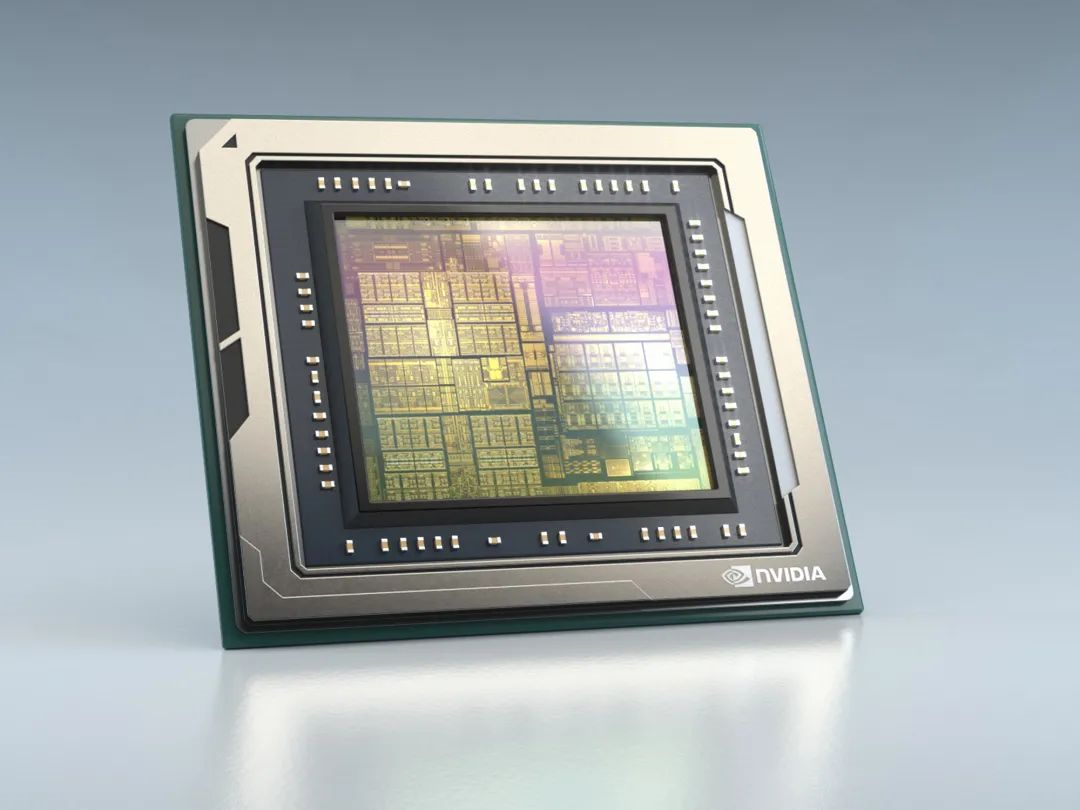
So far, Ideality L9 has not been registered with the MIIT yet, and SoP is not yet completed. Therefore, there is a possibility of adjustment before SoP. Is Ideality still unsure how many millimeter-wave radars to install? After consulting with industry insiders, we learned that key components generally require long-term system verification, and there is little chance of any changes within a year.
As for the millimeter-wave radar, there is another reference point, namely, the Mobileye Q5h solution adopted by Xpeng P7. The solution removes the corner millimeter-wave radar and only retains the front millimeter-wave radar. Although there are 12 ultrasonic radars on it, the ultrasonic radar is rarely used in urban navigation assistance and high-speed lane-changing scenarios, and is mostly used for distance measurement in small scenarios such as automatic parking.
The strongest lidar in comprehensive ability?
The brand-new Ideality L9 is equipped with lidar. This time, Ideality uses the AT128 series of Hesai Technology. Among all the models that have been announced to be equipped with lidar, only Ideality has chosen the Hesai lidar. The mainstream lidar brands in the market, besides Hesai, include Innovusion (Xpeng P7), Huawei (Enovate ME7), Tuda (NIO ET7), and Luminar (WeRide R7).
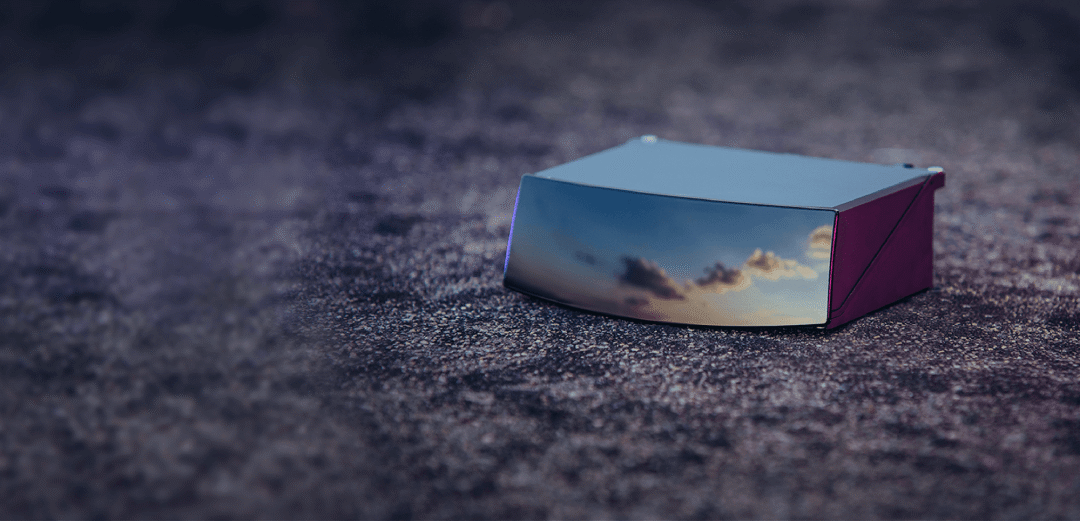
According to the laser wavelength, mainstream lidars can be divided into two camps: 905 nm and 1550 nm. After comprehensive analysis of resolution, detection range for 10% reflectivity, number of lasers, point cloud quantity, and other data, it can be seen that Hesai AT128 is indeed among the best in the market.
 It is worth noting that the Hesai AT128 is the laser radar with the highest resolution on the market, thanks to its 128 vertically arranged lasers that are converted into a plane by a one-dimensional prism, resulting in a point cloud quantity and resolution that are significantly higher than those of other single-laser lidars on the market.
It is worth noting that the Hesai AT128 is the laser radar with the highest resolution on the market, thanks to its 128 vertically arranged lasers that are converted into a plane by a one-dimensional prism, resulting in a point cloud quantity and resolution that are significantly higher than those of other single-laser lidars on the market.
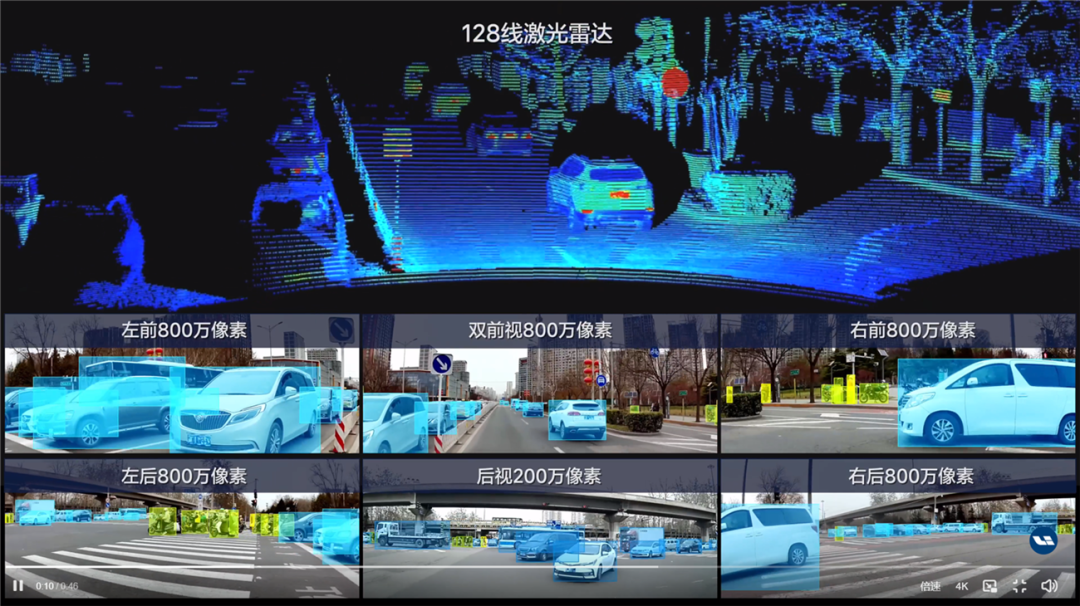
Although lidar is indispensable as a high-precision sensor on contemporary intelligent vehicles, whether it can truly wield its power depends on the engineers’ ability to design algorithms and functionalities, and after the delivery of mass-produced vehicles, we will further follow up on the intelligent driving experience of the Ideal L9.
Vehicle Safety Information
The Ideal L9 is equipped with flagship-level safety features, with body torsional stiffness surpassing that of its peers and the use of high-strength and hot-formed steels accounting for over 80% of the vehicle’s weight. In the most severe 25% off-center crash test, it can still achieve an excellent level of safety. The double aluminum alloy anti-collision beam in the front can effectively dissipate the frontal impact force and protect every passenger in the vehicle to the fullest extent possible.
The L9’s battery pack is protected by a dual protection system consisting of side barriers and an aluminum alloy shell, ensuring the safety of the battery pack even in demanding side-pole and underside tests.
Conclusion
We have been following the Ideal L9’s spoilers for four times now. After comprehensively considering the L9’s intelligent cockpit, space dimensions, powertrain configurations, intelligent driving, and price range of 450,000-500,000 yuan, it is obvious that the Ideal L9 has excellent product power.
All things are difficult at the beginning. In my opinion, the Ideal L9 is just the beginning of Ideal Auto’s journey. I am more looking forward to seeing what products Ideal Auto will launch in other segmented markets and whether these products can sell more than 10,000 units in each segmented market. Of course, we are also looking forward to solving the mystery of millimeter-wave radar.
This article is a translation by ChatGPT of a Chinese report from 42HOW. If you have any questions about it, please email bd@42how.com.
